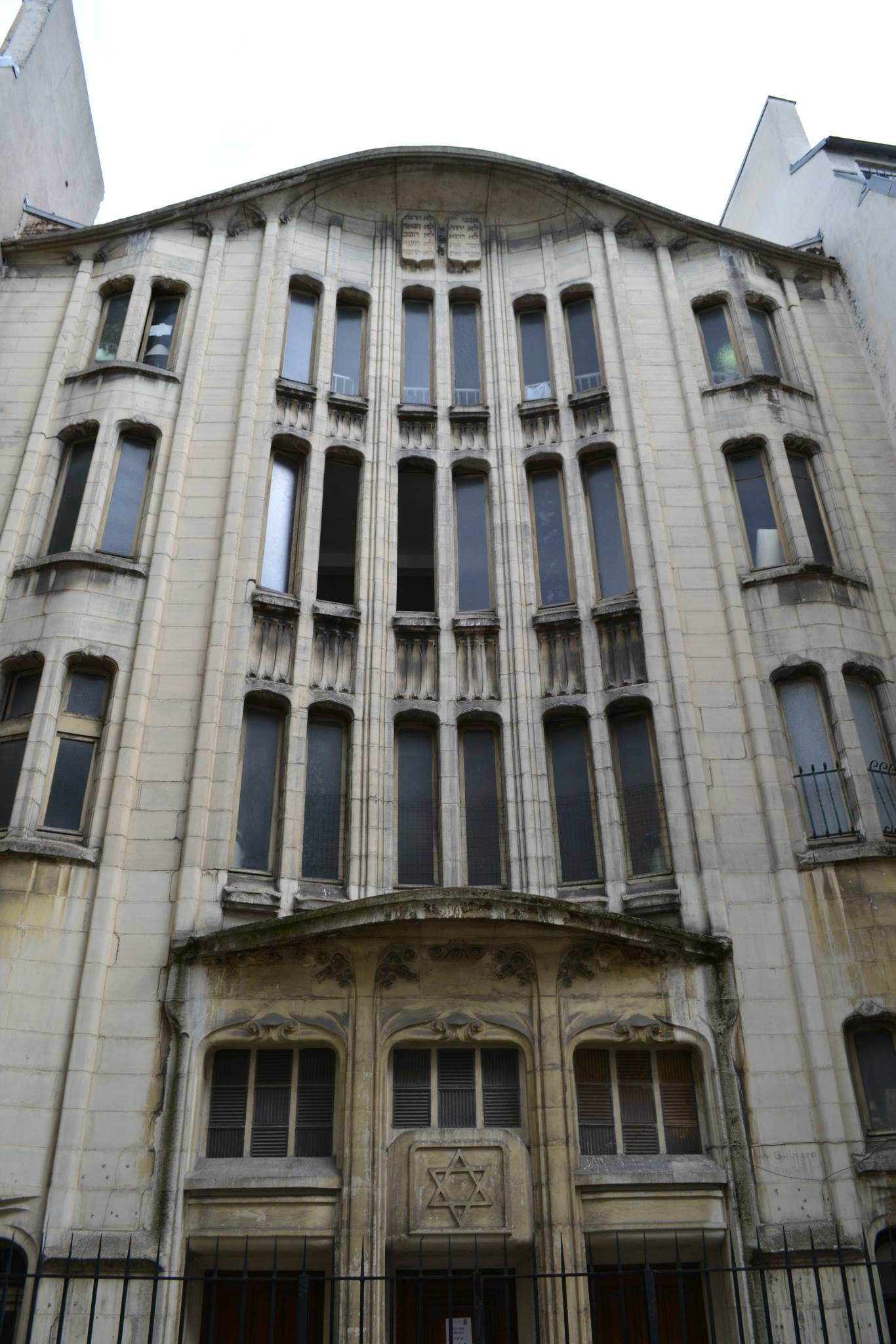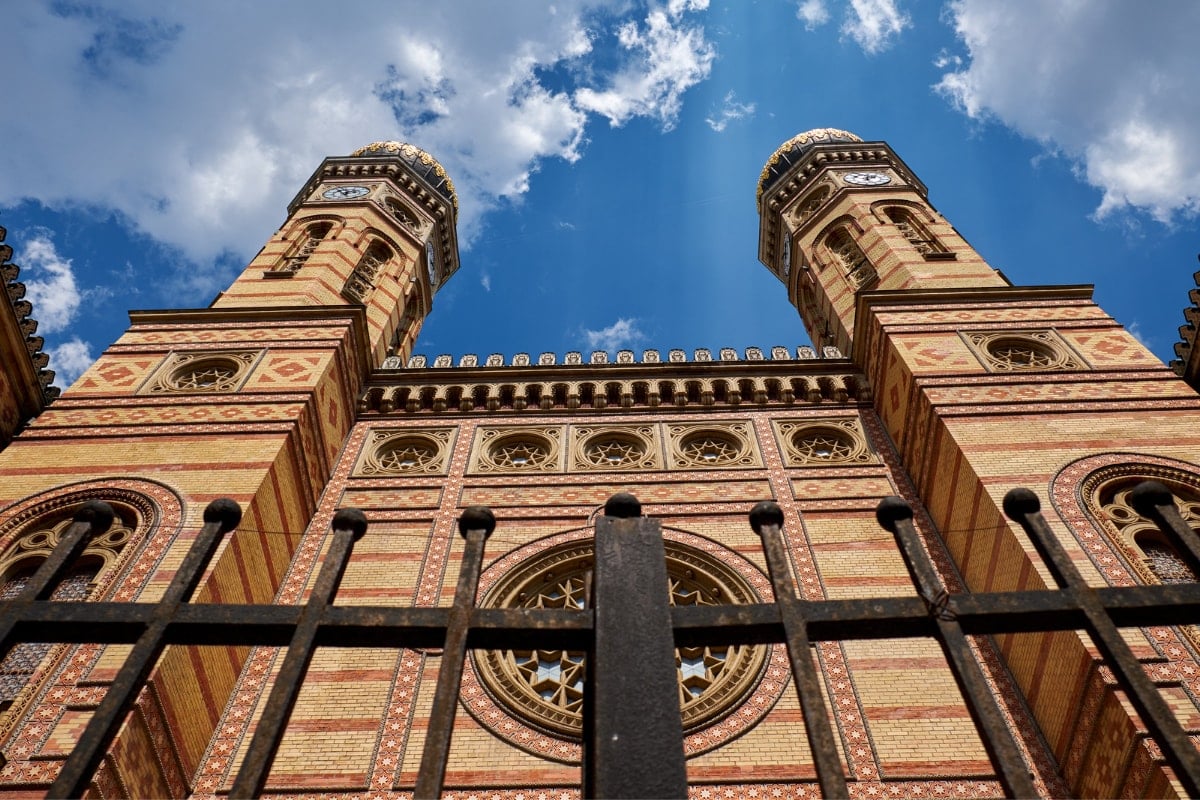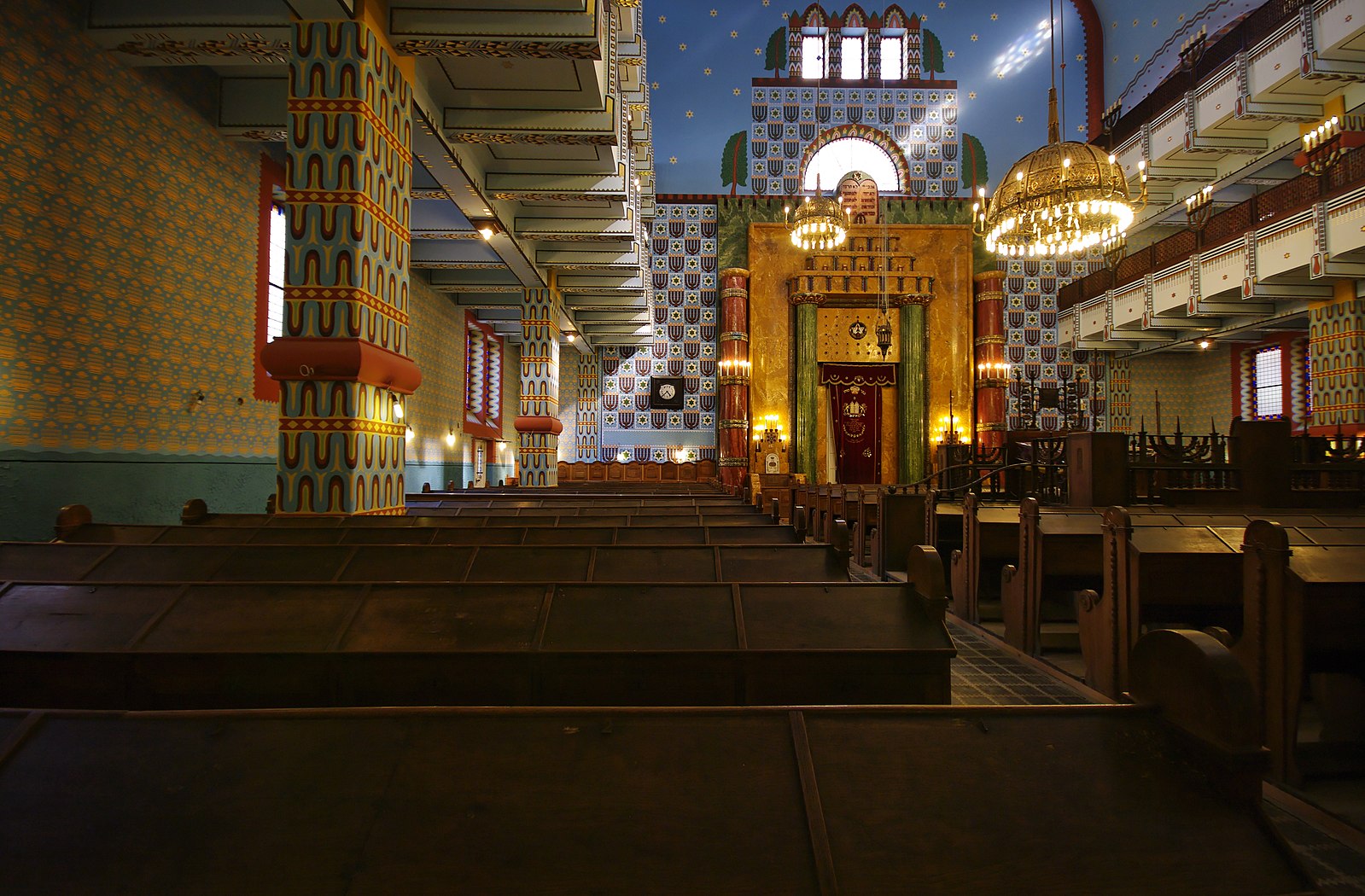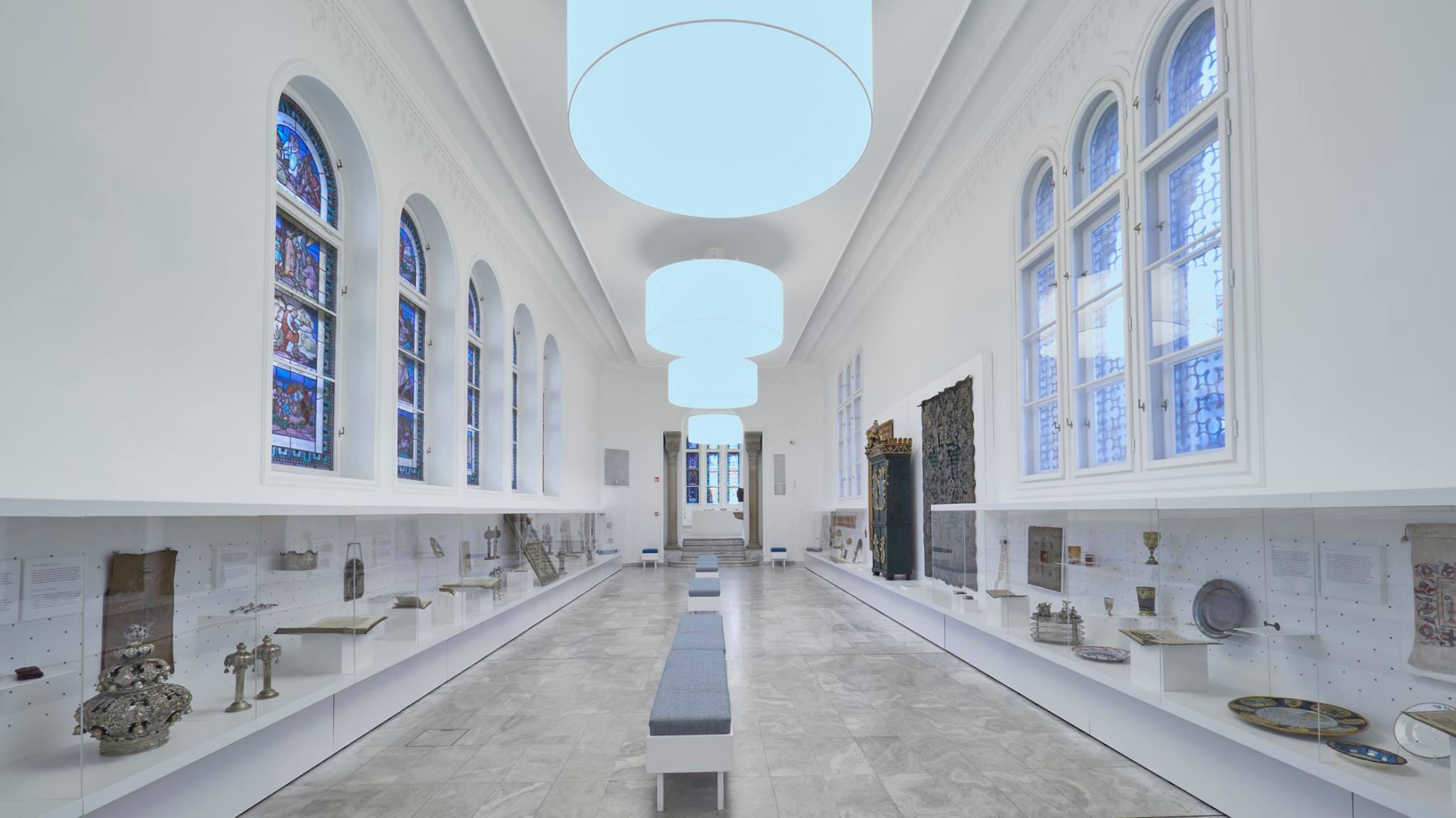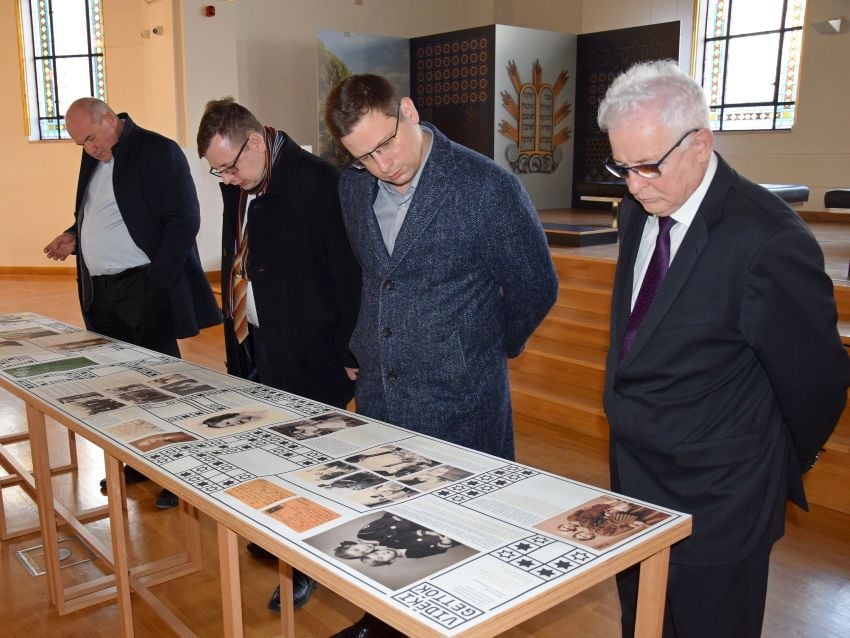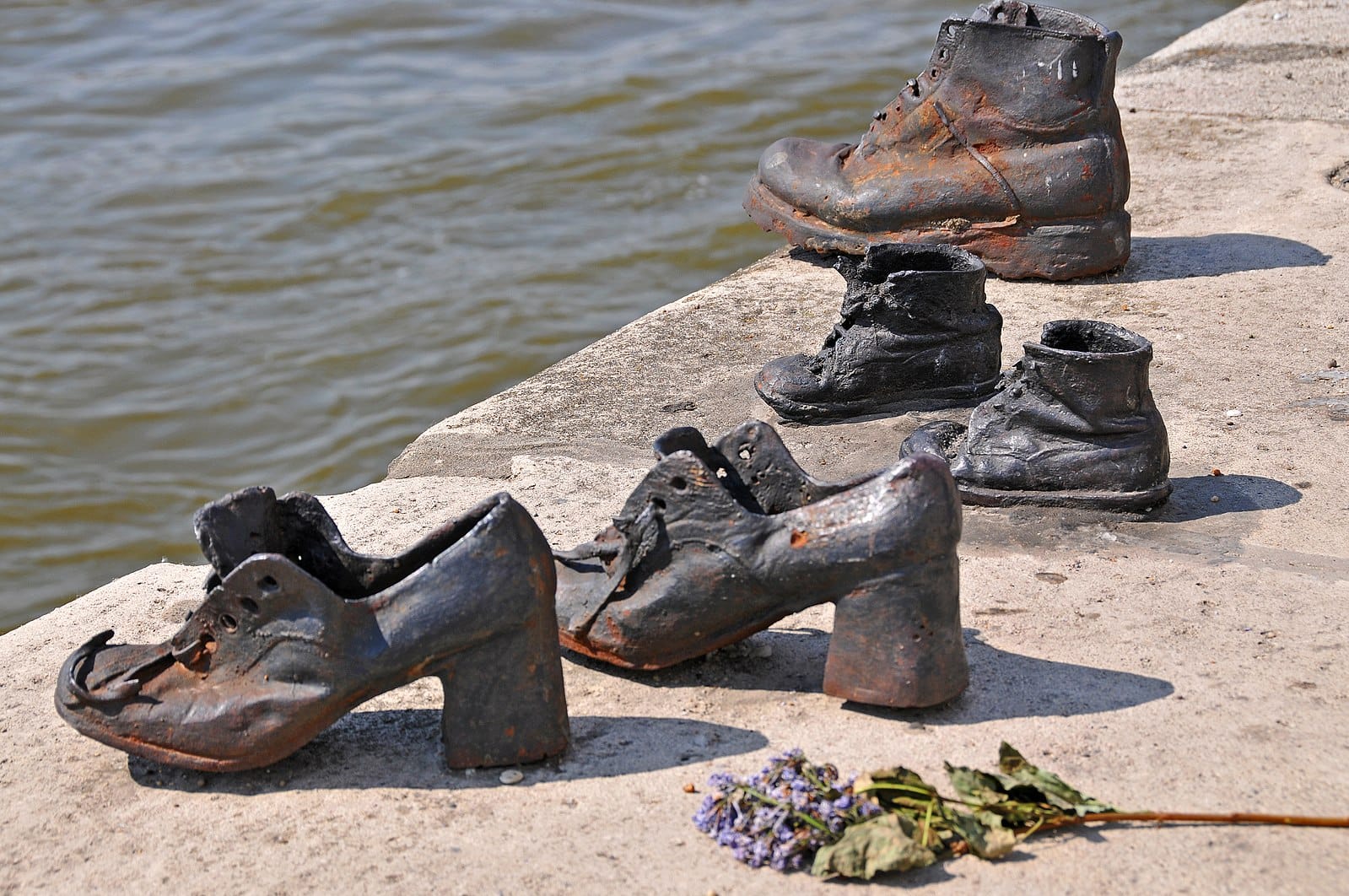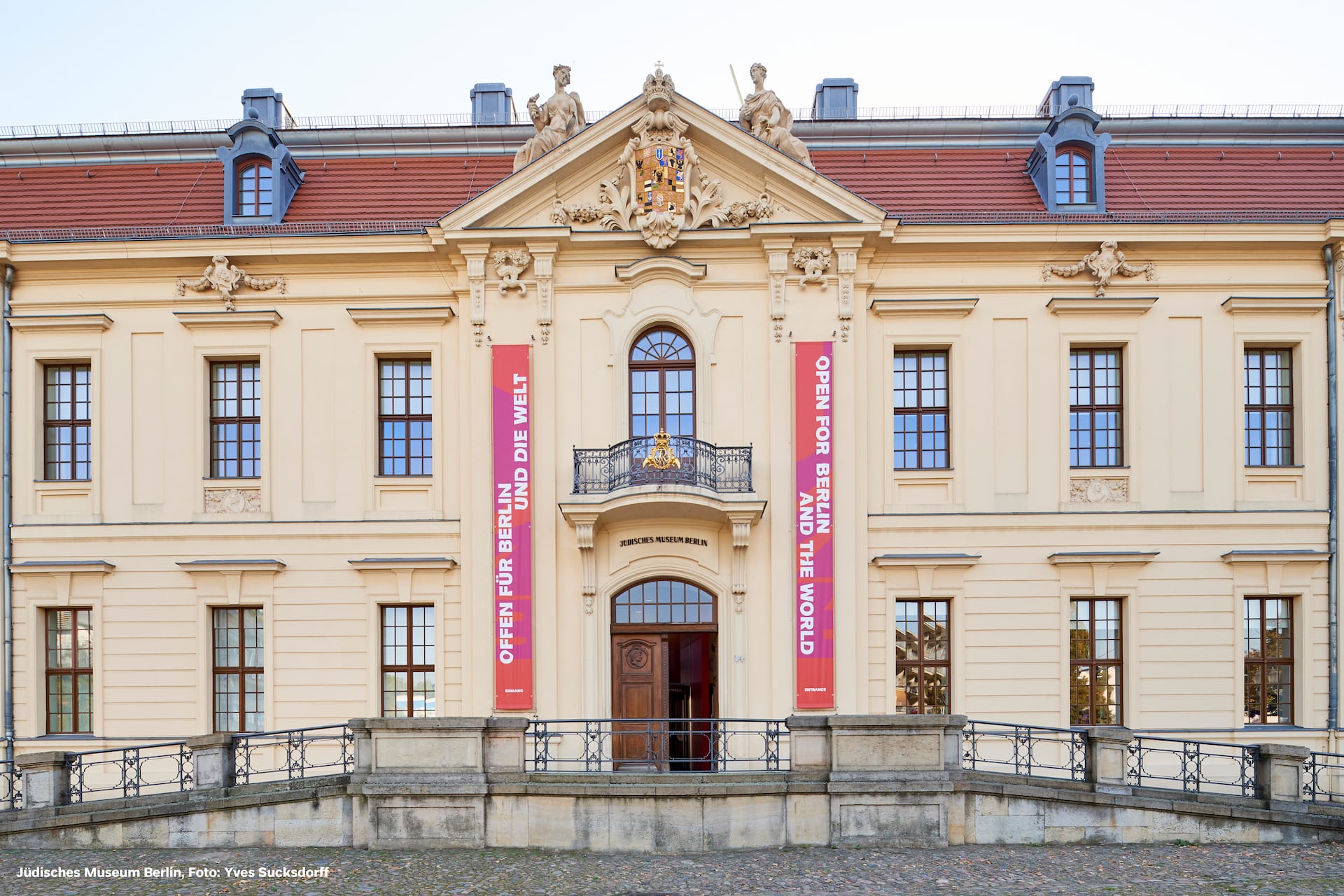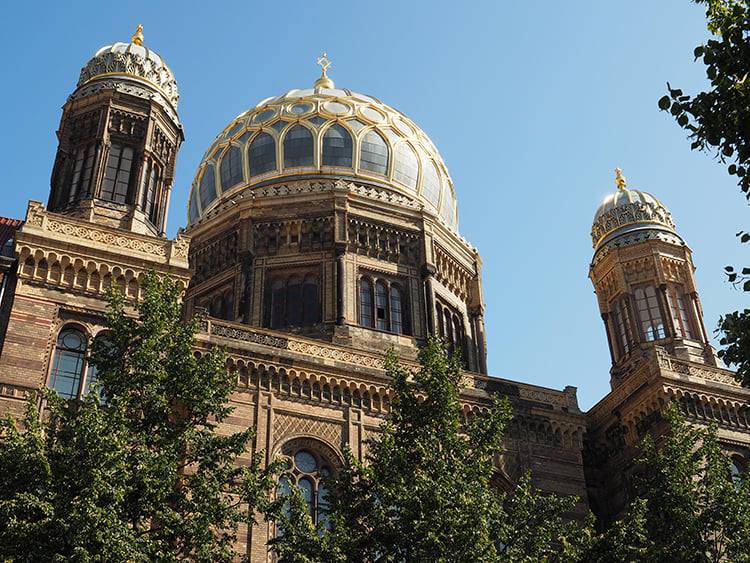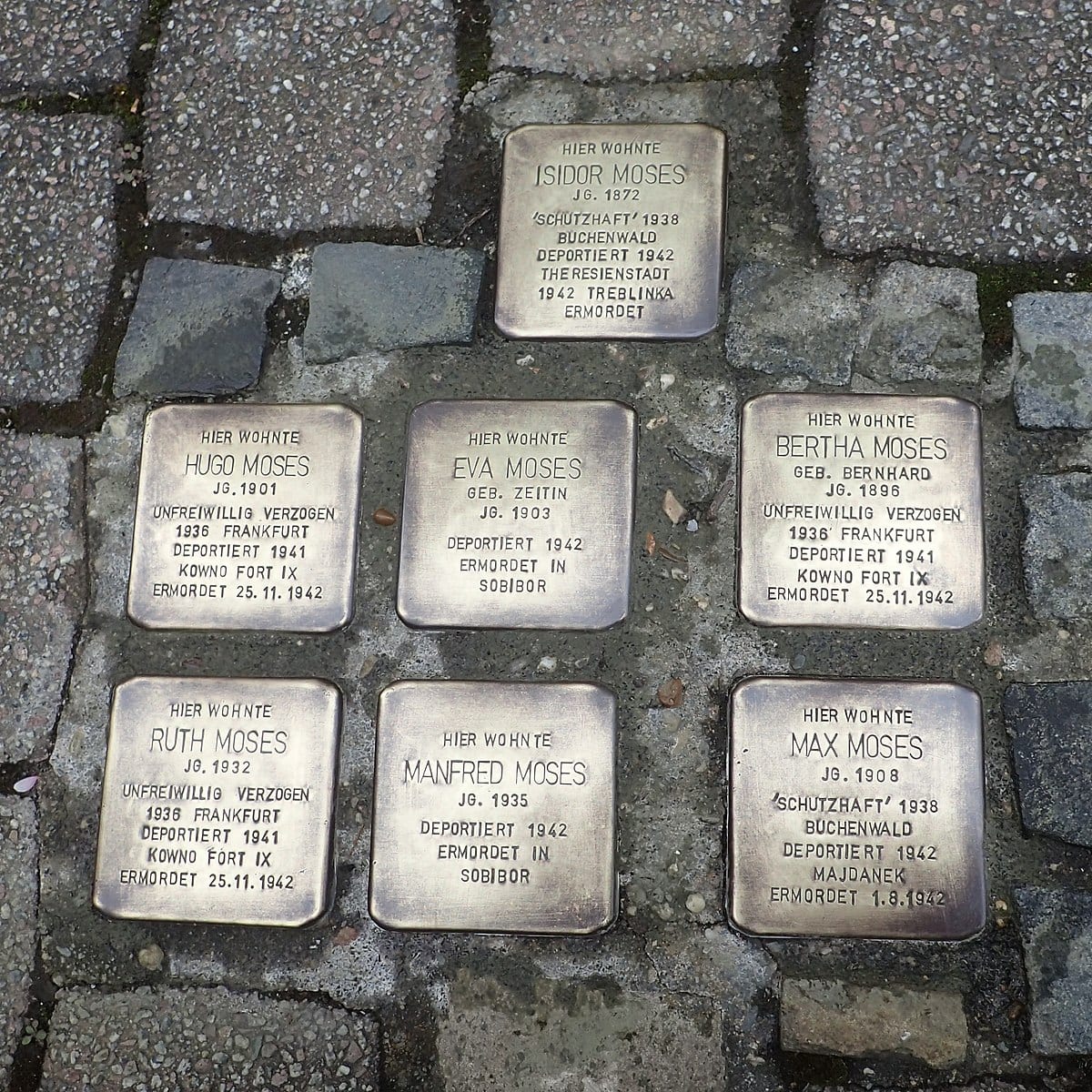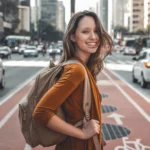The Agoudas Hakehilos Synagogue, at 10 rue Pavée, in the 4th arrondissement of Paris (Le Marais quarter), commonly referred to at the Pavée synagogue or Guimard synagogue, was designed by Art Nouveau architect Hector Guimard and erected between 1913 and 1914.
The synagogue was commissioned by the Agoudas Hakehilos, society composed of Orthodox Jews of primarily Russian origin, headed by Joseph Landau. Its erection is a testament to the massive wave of immigration from Eastern Europe that took place at the turn of the 20th century. Funded by this wealthy Polish-Russian group it did not cost the Parisian community a centime. They intended to provide a spacious and modernized place for Jews accustomed to the intimate and often squalid shtiblakh.
The construction of the Synagogue started in 1913 and was completed the following year, with the official inauguration taking place on 7 June 1914; nevertheless the Synagogue had been already active for services since October 1913. The opening ceremony was not attended by any of the representants of the Central Consistory, instead famous polish Hazzan Gershon Sirota was present at the event.
During the year in 1934 a gas explosion destroyed the main hall which was rebuilt right after. On the evening of Yom Kippur in 1941, the building was dynamited along with six other Parisian synagogues by collaborators of the nazi occupants; however the bomb did not go off and the building was preserved. On the night between 2 and 3 October of the same year, the synagogue was damaged following an attack organised by far-right association Mouvement Social Révolutionnaire. It was partially restored afterwards, but the main entrance was altered from its original appearance.
The building was registered as a monument historique by the French authorities on July 4, 1989. The synagogue is fully functional today with the Rabbi being Rav Moredekhai Rottenberg, the son of the late Rav Haim Yaakov Rottenberg, known as the Rouv. The synagogue is now open to the public.
